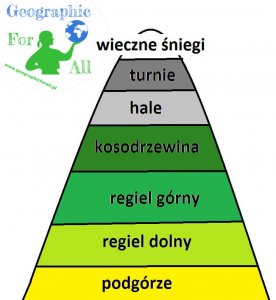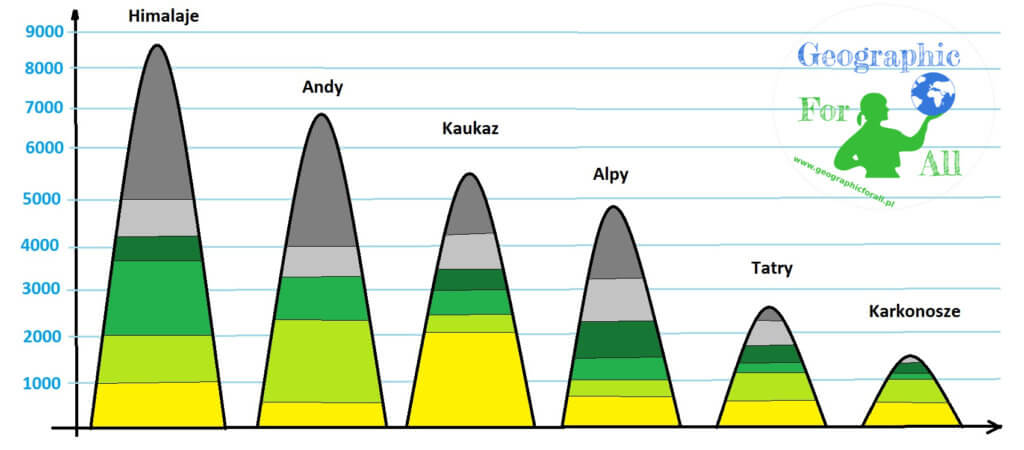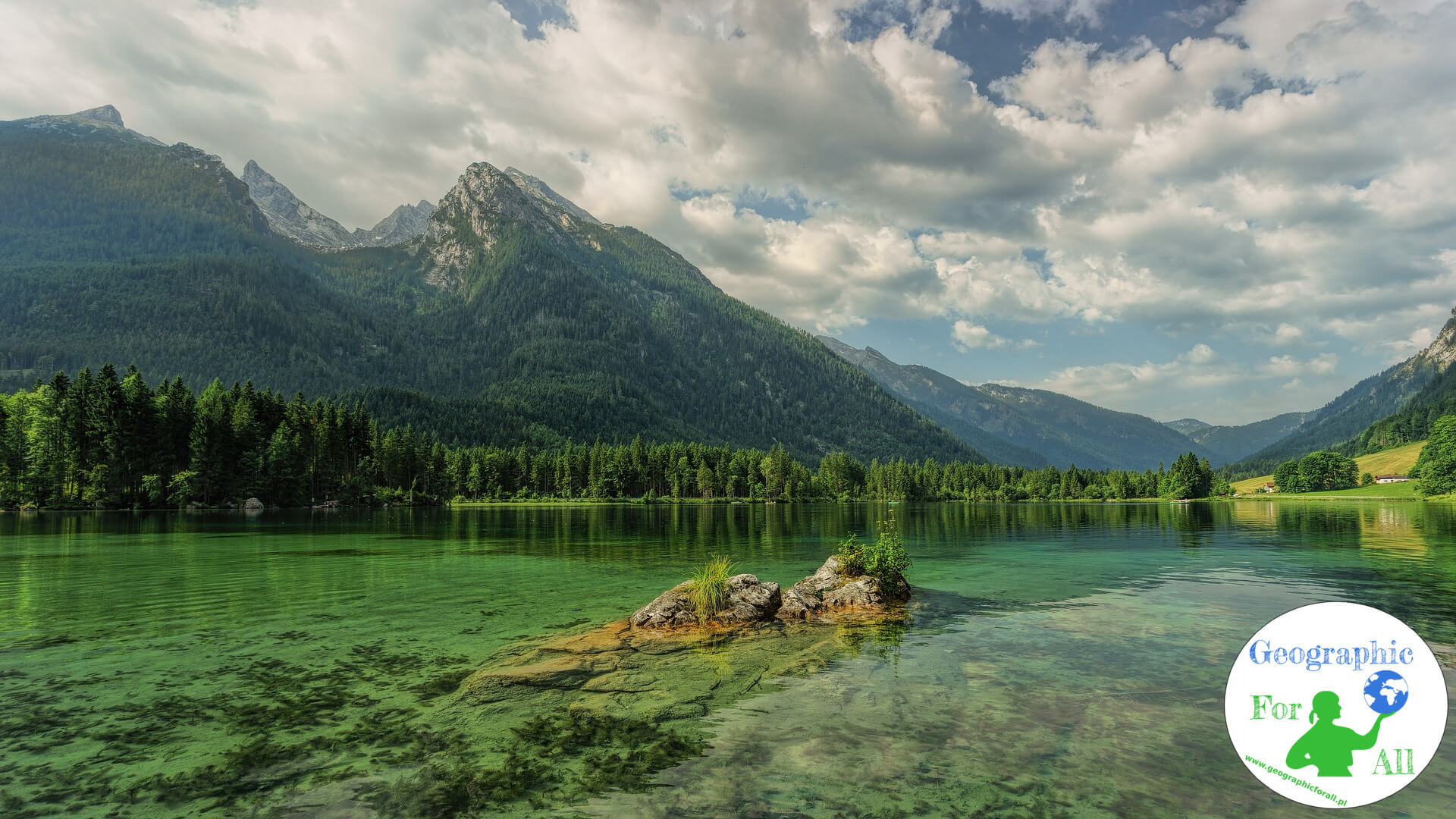Altitudinal zonation in the mountains is something obvious for everyone – foothil zone, alpine zone, snow zone. However, it is worth taking a closer look at these floors, as well as the differences in individual mountain chains.
General altitudinal zonation in the mountains

- foothill zone
- montane zone
alpine tree line
- subalpine zone
- low-alpine level
- alpine zone
climatic snow line
- snow zone / nival level
Specific altitudinal zonation in the mountains
Foothill zone is currently mainly used by humans, so it’s difficult to talk about typical vegetation here. Nevertheless, once deciduous forests grew here.
In the Andes this zone is called tierra caliente * and the equatorial jungle grows there.
In lower part of montane zone there is a cool temperate climate and mixed or deciduous forest growing. There are brown earth type mountain. Although the growing season is not yet optimal, average temperatures are already higher than 0. In South America in tierra templada * you can find equatorial forest, but also coniferous species.
Upper part of montane zone is mainly coniferous, in Poland mainly spruce. The climate here is cool. In the Andes, zone tierra fria * is already really cold for tropics, but still „in the plus” – the alpine forest is growing here.
Mountain pine and green alder are found only in the subalpine zone in Central Europe. In the Himalayas and the Alps, rhododendron grows in this sphere. A fairly compact network of plants protects the soil against erosion and stops smaller landslides and avalanches from higher zones.
Parano and puma are a cross between subalpine and alpine zone in South America. There is grassy vegetation, shrubs and shrubs, in the case of dry-loving and sun-loving puma.
Low alpine level, i.e. highland grasslands and meadows growing in cold temperate climates. There are annual plants. Landslides and avalanches often occur.
The alpine zone is a land of rocks. The vegetation includes mosses, lichens and some species of perennial flowers on soil scraps. Strong wind erosion, low temperatures. In the Andes, we will call this floor tierra helada *.
Snow zone, i.e. no vegetation, snow and rocks all year round. In South America, it is called tierra nevada *.
Floor heights
Comparison of plant floor heights in different mountain ranges, heights above sea level:
|
Zone
|
Tatra Mountains
|
Karkonosze
|
Andes
|
Himalayas
|
Alps
|
Caucasus Mountains
|
|
Foothill zone
|
< 650
|
< 500
|
< 600
|
< 1000
|
< 800
|
< 2000
|
|
Lower montane zone
|
650-1200
|
500-1000
|
600-2000
|
1000-2000
|
800-1000
|
2000-2600
|
|
Upper montane zone
|
1200-1500
|
1000-1250/1300
|
2200-3200
|
2000-3700
|
1000-1500
|
2600-3000
|
|
Subalpine zone
|
1500-1800
|
1250/1300-1450
|
3200-4000
|
3700-4200
|
1500-2200
|
3000-3500
|
|
Alpine zone
|
1800-2300
|
1450-1603
|
3200-4000
|
4200-5000
|
2200-3100
|
3500-4300
|
|
Snow zone
|
> 2300
|
> 4000
|
> 5000
|
> 3100
|
> 4300
|

*division by Humboldt


0 Comments for “Altitudinal zonation in the mountains”